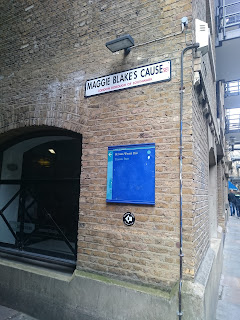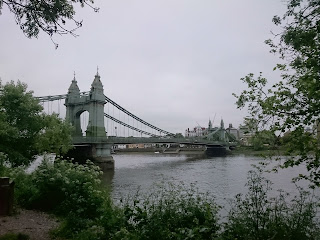Straightaway, we were treated to the SIS building at Vauxhall Cross. This is a grand piece of architecture viewed from far away, but, seen close up, the modern interpretation of art deco style is even more impressive.
Having started late in the day, and with a daughter (later two) for company, we stopped at the Tamesis Dock floating pub for refreshment, then continued. After passing Westminster Bridge, we had to remind ourselves we were still on the Thames Path. On a summer Saturday afternoon this was choc-a-bloc with tourists, with even a one-way system for walkers at one point. Needless to say, the Thames Path was not the object of their tours.
 Throngs of people continued all the way along to Tower Bridge. At Blackfriars we discovered there is one railway station even closer to the Thames Path than Barnes Bridge.
Throngs of people continued all the way along to Tower Bridge. At Blackfriars we discovered there is one railway station even closer to the Thames Path than Barnes Bridge.After Tower Bridge, once again we were in the milieu of new developments, but in this eastern area a little more respectful of the local style. Maggie Blake's Cause commemorates a local resident who fought successfully to continue riverside access to the public as these developments were built. Now the Thames Path follows this alley named after her.
Towards Rotherhithe, the new developments give way to more ordinary housing and once again we were among locals who actually live by the river. We stopped at the Angel, a pub we have visited once before, and were glad to be back. It has a sign saying the windows should be closed when the tide is in.
We have passed through central London: the river here is almost the sea. We are nearly finished.







